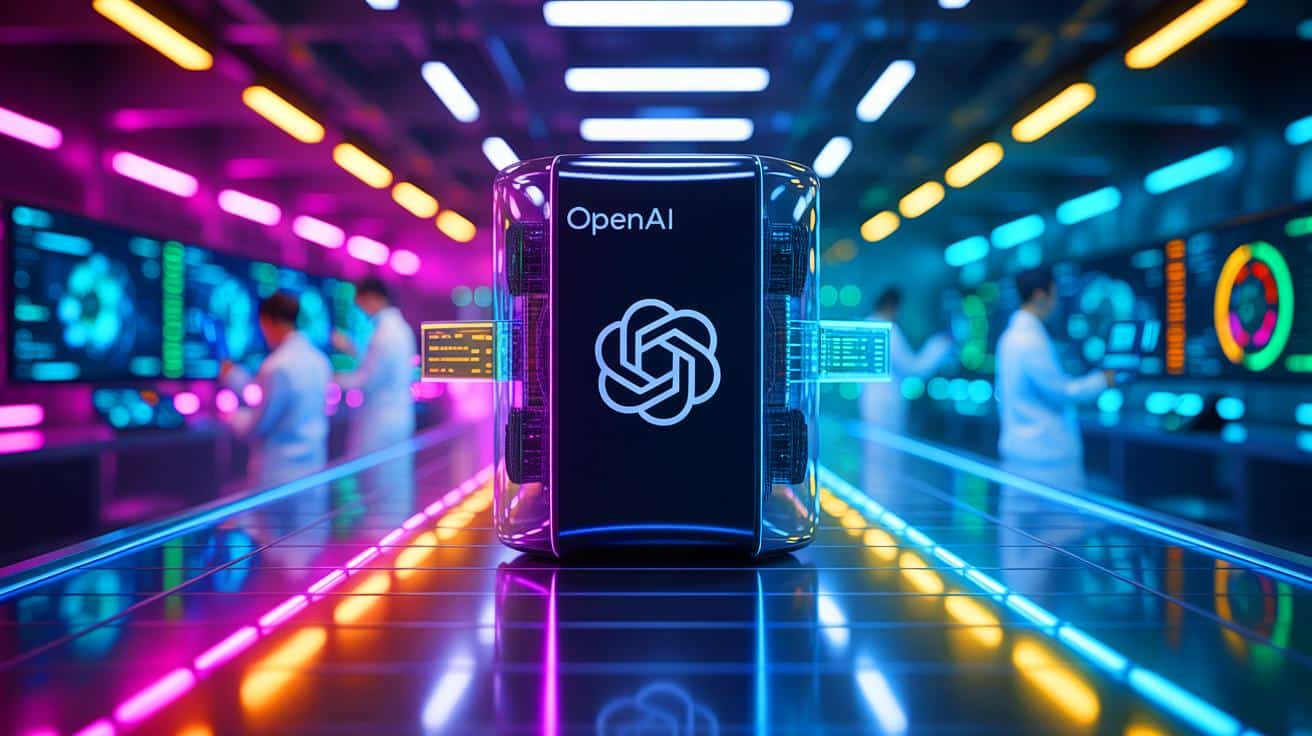IN A NUTSHELL
🔬 Researchers use GPT-5 to uncover limits in quantum error reduction.
🤖 AI aids in solving complex problems in quantum computing.
📈 Study reveals theoretical ceiling for QMA complexity.
💡 Artificial intelligence plays a pivotal role in advancing scientific research.
In a groundbreaking development in the field of quantum computing, researchers have discovered a ceiling for error reduction within the realm of Quantum Merlin Arthur (QMA) complexity. This revelation was significantly aided by OpenAI’s GPT-5, which contributed a critical mathematical insight. The study represents a major milestone in quantum complexity research, highlighting the potential of artificial intelligence to assist in solving some of the most abstract problems. It also sets the stage for future explorations into the limits of quantum error reduction and the role of AI in advancing scientific understanding.
Defining QMA and Its Significance
In the realm of quantum computing, Quantum Merlin Arthur (QMA) plays a pivotal role. QMA is the quantum analog of NP, a class of problems where solutions are easily verified but not necessarily easy to find. In QMA, a hypothetical prover, named Merlin, sends a quantum state, or “witness,” to a verifier called Arthur. Arthur then runs a quantum algorithm to determine the validity of the proof. This process involves two critical elements: completeness and soundness. Completeness refers to the probability that Arthur will accept a valid proof, while soundness is the probability of mistakenly accepting a false one.
Researchers have been exploring methods to reduce errors in this verification process. Amplification techniques, which involve repeating tests and combining results, have shown that completeness can be pushed to doubly exponential levels of certainty. However, the question remained whether further enhancement could be achieved. The recent study, aided by GPT-5, suggests that these levels are indeed the maximum possible, a discovery that reshapes our understanding of quantum complexity.
GPT-5’s Critical Insight
Scott Aaronson from the University of Texas at Austin and Freek Witteveen from CWI Amsterdam spearheaded the research. Initially, Aaronson faced challenges in analyzing the data. Seeking assistance, he turned to GPT-5. Although the AI’s initial suggestions missed the mark, its eventual proposal was revolutionary. GPT-5 suggested reframing the issue using a function that precisely measured the closeness of acceptance to certainty. This reframing allowed researchers to apply approximation theory, leading to the conclusion that completeness cannot exceed doubly exponential closeness to one, and soundness cannot drop below an exponentially small threshold.
The study marks a turning point: AI is no longer just drafting papers or writing code. In this case, it helped close a decades-long gap in one of the most abstract areas of computer science.
https://www.rudebaguette.com/en/2025/09/nvidia-just-spent-100-billion-on-ai-company-builds-5-million-gpu-monster-while-stock-market-explodes-in-panic/
This insight was pivotal in proving that black-box amplification has reached its theoretical ceiling in terms of error reduction. The contribution of GPT-5 in this domain is a testament to the evolving capabilities of AI in assisting with complex problem-solving.
The Implications of the Study
The implications of this study are profound. By establishing the limits of quantum error reduction, researchers have delineated the boundaries within which future quantum computing advancements must operate. The study’s findings indicate that resolving whether QMA equals QMA1 will require nonrelativizing methods, which involve analyzing circuit structures directly rather than treating them as black boxes. This result also underscores the asymmetry within QMA: while completeness relies on a single effective witness, soundness must be robust against every possible one.
Critics have argued that the insight provided by GPT-5 might have been obvious to seasoned researchers. However, Aaronson countered that the AI’s suggestion was a product of its extensive data processing capabilities, which can offer new perspectives even to complex problems. This collaboration between human and machine highlights a promising direction for future research in quantum computing.
The Future of AI in Scientific Research
The involvement of GPT-5 in defining the limits of QMA complexity is a noteworthy example of AI’s potential in scientific research. It showcases how AI can contribute more than just automation or optimization; it can offer genuine intellectual insights that propel scientific discovery. As AI continues to evolve, its role in research will likely expand, providing support in areas that require intricate data analysis and complex problem-solving.
The study leaves big questions open, including whether QMA equals QMA1. But it marks a turning point: AI is no longer just drafting papers or writing code.
This partnership between AI and researchers opens new avenues for exploration and innovation, challenging traditional boundaries of scientific inquiry. As we move forward, the integration of AI in research may redefine how we approach and solve the most challenging questions in science.
The discovery of the limits of quantum error reduction with the aid of GPT-5 marks a significant advancement in the field of quantum computing. It highlights the potential for AI to play a crucial role in scientific research, offering new insights and solutions to complex problems. As researchers continue to explore the possibilities of AI-assisted inquiry, a key question emerges: How will the integration of AI reshape the landscape of scientific discovery and innovation in the coming years?
This article is based on verified sources and supported by editorial technologies.
Did you like it? 4.4/5 (24)

